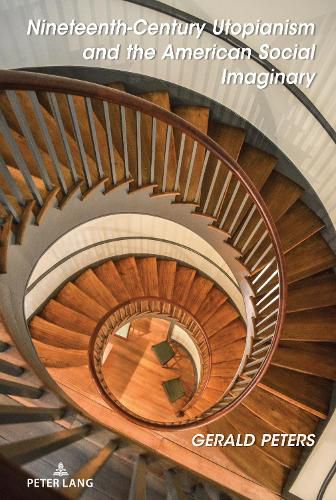Readings Newsletter
Become a Readings Member to make your shopping experience even easier.
Sign in or sign up for free!
You’re not far away from qualifying for FREE standard shipping within Australia
You’ve qualified for FREE standard shipping within Australia
The cart is loading…






This title is printed to order. This book may have been self-published. If so, we cannot guarantee the quality of the content. In the main most books will have gone through the editing process however some may not. We therefore suggest that you be aware of this before ordering this book. If in doubt check either the author or publisher’s details as we are unable to accept any returns unless they are faulty. Please contact us if you have any questions.
Religious sectarianism played a significant role in the early settlement and social development of the United States. Although historians have minimized what these societies contributed to the creation of a uniquely American social imaginary, this era of social experimentalism drew the attention of highly influential European writers including Goethe, Tolstoy, Marx, and Weber. More recent social thinkers like Benedict Anderson, Charles Taylor, and Robert Wuthnow emphasize the importance of discourses (familial, dynastic, religious) in the creation of community. They contend that literary analysis, in particular, is critical for understanding how social imaginaries develop, sustain, and transform themselves. Drawing on thinkers like Marx, Weber, Dawkins, and Goethe, Nineteenth-Century Utopianism and the American Social Imaginary explores the evolution of the American social imaginary within these discursive traditions. Goethe, in particular, becomes a major contributor to this discussion, not simply because of his profound international influence during the period, but because he was a contemporary witness to these events. His final novel Wilhelm Meister’s Journeyman Years (1829) depicts an emigrant society about to start an intentional community in the New World as an illustration of cultural metamorphosis that becomes central to understanding social development during the period. Utilizing a theoretical framework that draws on Lacan, the Frankfurt School, and post-structuralist thinkers like Fredric Jameson, Slavoj Zizek, Ernesto Laclau, and Chantal Mouffe, the author shows how communities develop within specific discursive structures and how American adaptations of these structures have the potential to create more radical and equitable democracies.
$9.00 standard shipping within Australia
FREE standard shipping within Australia for orders over $100.00
Express & International shipping calculated at checkout
This title is printed to order. This book may have been self-published. If so, we cannot guarantee the quality of the content. In the main most books will have gone through the editing process however some may not. We therefore suggest that you be aware of this before ordering this book. If in doubt check either the author or publisher’s details as we are unable to accept any returns unless they are faulty. Please contact us if you have any questions.
Religious sectarianism played a significant role in the early settlement and social development of the United States. Although historians have minimized what these societies contributed to the creation of a uniquely American social imaginary, this era of social experimentalism drew the attention of highly influential European writers including Goethe, Tolstoy, Marx, and Weber. More recent social thinkers like Benedict Anderson, Charles Taylor, and Robert Wuthnow emphasize the importance of discourses (familial, dynastic, religious) in the creation of community. They contend that literary analysis, in particular, is critical for understanding how social imaginaries develop, sustain, and transform themselves. Drawing on thinkers like Marx, Weber, Dawkins, and Goethe, Nineteenth-Century Utopianism and the American Social Imaginary explores the evolution of the American social imaginary within these discursive traditions. Goethe, in particular, becomes a major contributor to this discussion, not simply because of his profound international influence during the period, but because he was a contemporary witness to these events. His final novel Wilhelm Meister’s Journeyman Years (1829) depicts an emigrant society about to start an intentional community in the New World as an illustration of cultural metamorphosis that becomes central to understanding social development during the period. Utilizing a theoretical framework that draws on Lacan, the Frankfurt School, and post-structuralist thinkers like Fredric Jameson, Slavoj Zizek, Ernesto Laclau, and Chantal Mouffe, the author shows how communities develop within specific discursive structures and how American adaptations of these structures have the potential to create more radical and equitable democracies.